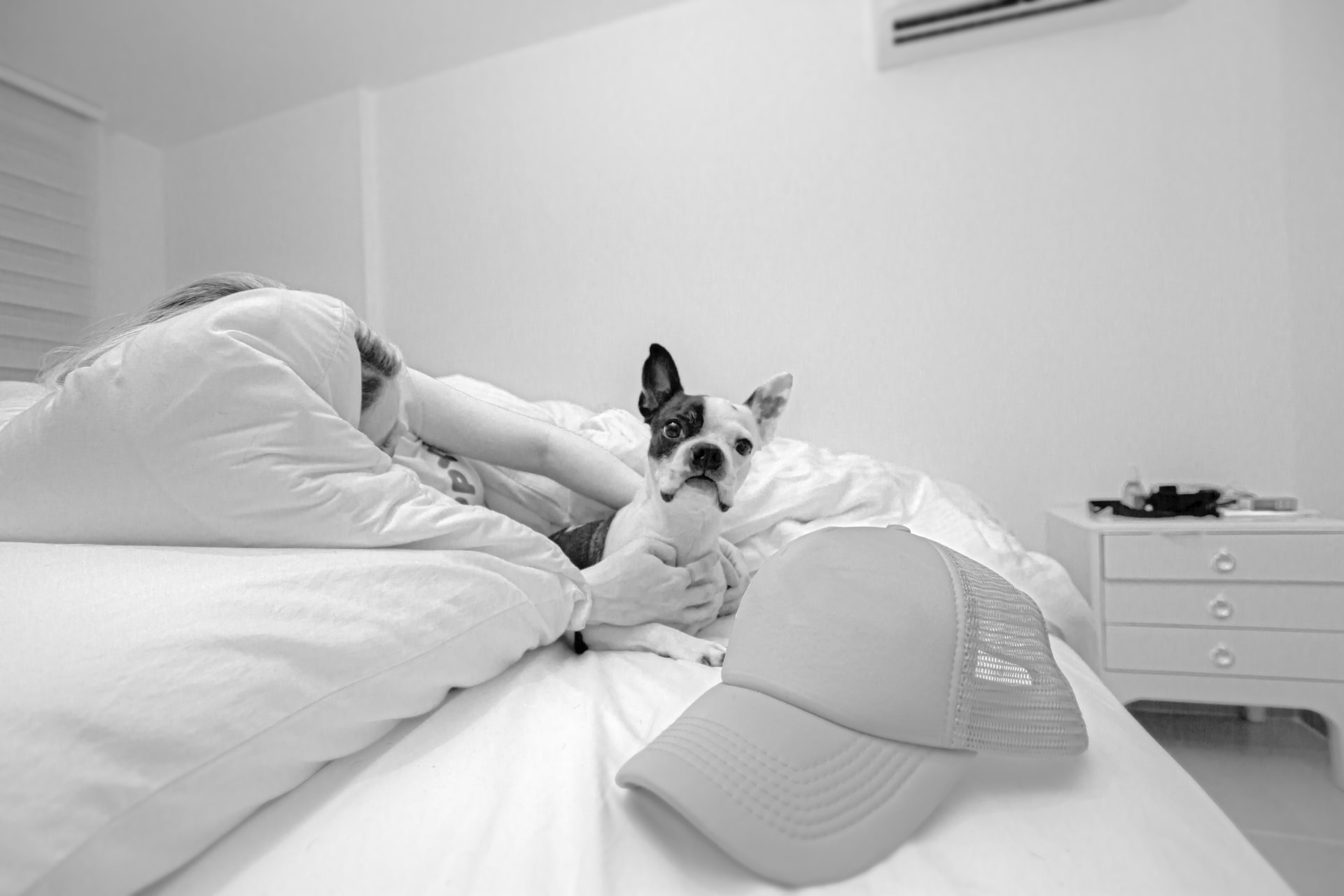There are some questions that really divide dog owners: breeder or rescue? Store bought or homemade food? Dog park or not? But for our money, the most contentious issue is dogs on beds (or couches). Generally the jury is pretty split. A survey by the American Pet Products Manufacturers Association found that 42 percent of owners let their pup cuddle up with them. But we’d guess that locally that number is even higher. When we reached out to our Off the Leash audience (who, to be fair, are pretty dog mad) for their opinion, the consensus was overwhelmingly positive. Not only were people very clear that dogs belonged on beds, they couldn’t believe how anyone would dare disagree.
But, like all things, it’s not so simple. Whether or not you let your pup up isn’t automatically a reflection of your feelings for them. As it turns out, there are a lot of strong arguments on both sides of the debate. So let’s try get some clarity, and take a look at the pros and cons of dogs on beds.
The Pros of Dogs on Beds
Calming: Talking to people about why they like sharing a bed with their dog, the #1 answer was that it’s comforting to have them close. That’s actually backed up by science. When you’re near your dog, your brain releases oxytocin which can lead to a sense of relaxation, trust, and safety.
The feeling goes both ways too. Dog trainer Cesar Millan has weighed in on the topic, explaining: “It is perfectly natural for a dog to sleep with other pack members, and it is also a powerful way to bond with your dog. But don’t forget the rules, boundaries, and limitations; it’s your bed—not your dog’s.”
Plus, they’re excellent hot water bottles.
Nature’s alarm clocks: Struggle to get out of bed in the morning? Try bringing a dog into the equation. Dogs tend to be early risers as they often wake up looking for breakfast or needing to go to the loo (both relatable). You might be able to hit the snooze button 10 times, but a dog keen for a walk isn’t going to let you off the hook that easily.
Better than a human: For what it’s worth, most dogs make better bed partners than people. The Journal of the International Society of Anthrozoology looked at the sleep habits of 962 women in their study “An Examination of Adult Women’s Sleep Quality and Sleep Routines in Relation to Pet Ownership and Bedsharing.” They found that compared to humans, “dogs who slept in the owner’s bed were perceived to disturb sleep less and were associated with stronger feelings of comfort and security.”
The Cons of Dogs on Beds
Disturbing: Not all dogs snore, but the ones who do really do. Plus many dogs tend to move around at night and hog the bed (case in point: the video above). Now, we could argue humans do all that too, but it’s something to consider if you’re a light sleeper.
Behavioural issues: This is one of the trickiest issues around having a dog in the bed. If your pet has issues with dominance, anxiety, or territorial aggression, sleeping with you can actually make things worse. You’d think that closeness could be soothing, but in reality it can reinforce ideas that they’re equal to you and are allowed to act like the boss.
Although to be clear, while sleeping with you may aggravate existing issues, it probably won’t lead to them. So if your pet is generally pretty relaxed with this stuff, it’s not really a concern.
Hygiene: No matter how clean your pet is, having them in your bed will increase your exposure to dirt and bacteria. Worst case scenario, that can transmit feas, parasites, or even ticks to you. So if you do bring your dog to bed, make sure they’re having regular baths, vet checks, are up to date on their vaccinations and treatments, and are fully house trained.

Our Final Word on the Pros and Cons of Dogs on Beds
If you do choose to sleep with your dog, there are a few things you can do to avoid the above issues.
Make sure they’re ok without you: Before you get them used to sleeping with you, ensure they’re able to spend time by themselves and can sleep alone if they need to. Dog trainer Steve Brooks explains: “Your dog should be able to stay on the floor while you’re in bed for at least 10 minutes, and then you should be able to invite your dog up on your terms.”
Make sure the bed is for sleeping: Let your dog know this is a chill space by keeping toys out of the bedroom, and not getting them hyped with play before settling down for the night. This will help keep them from disturbing you in the night too.
Make sure everyone is on the same page: If you share your bed with a (human) partner, ensure they’re as excited to have the dog around as you are. You’d be surprised how often people can feel jealous of their loved ones’ relationship to their pets.
Want to learn more about life with your dog? Check out:
Sleeping With a Dog Better than Sleeping with a Person
Is Sharing Food with Your Dog Unhygienic?
How Often Should You Wash Your Dog?
While you’re here, subscribe to our newsletter, check out our magazine, and follow us on Instagram, Facebook, and Twitter.







